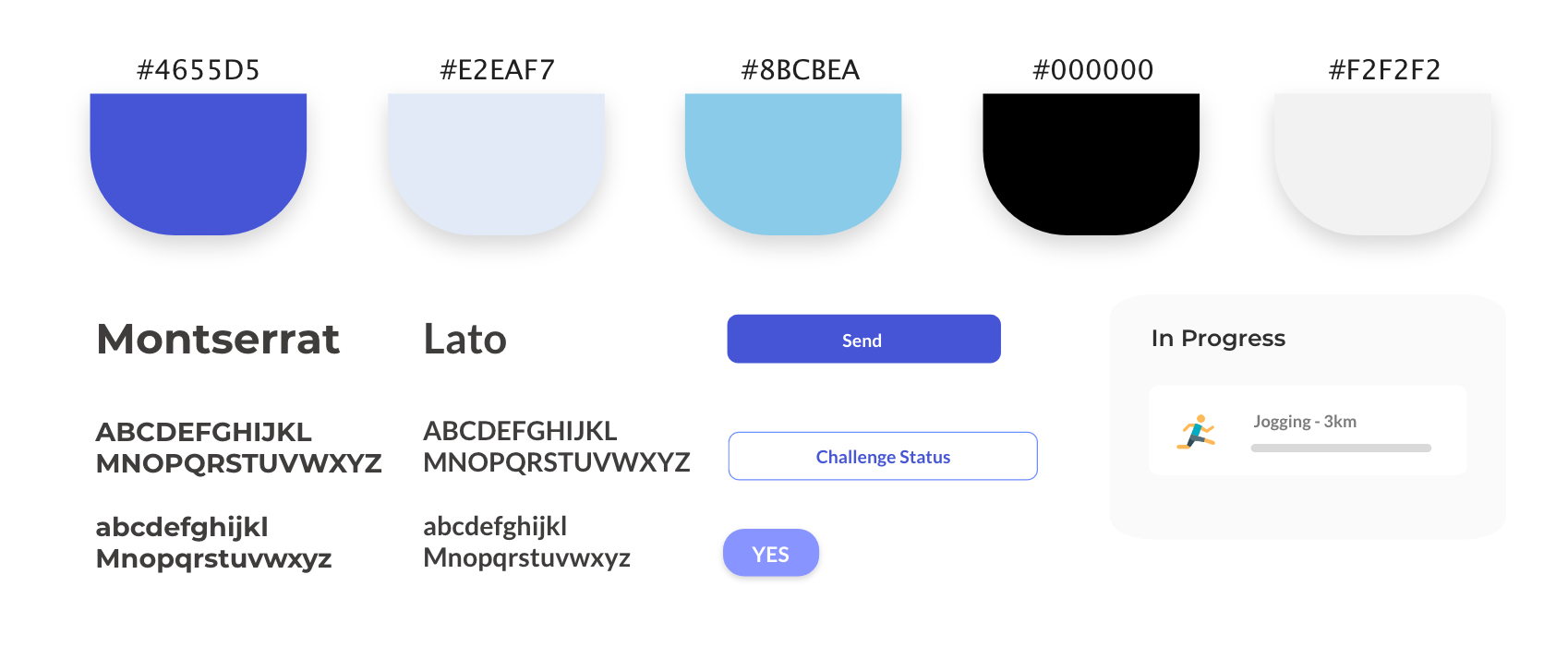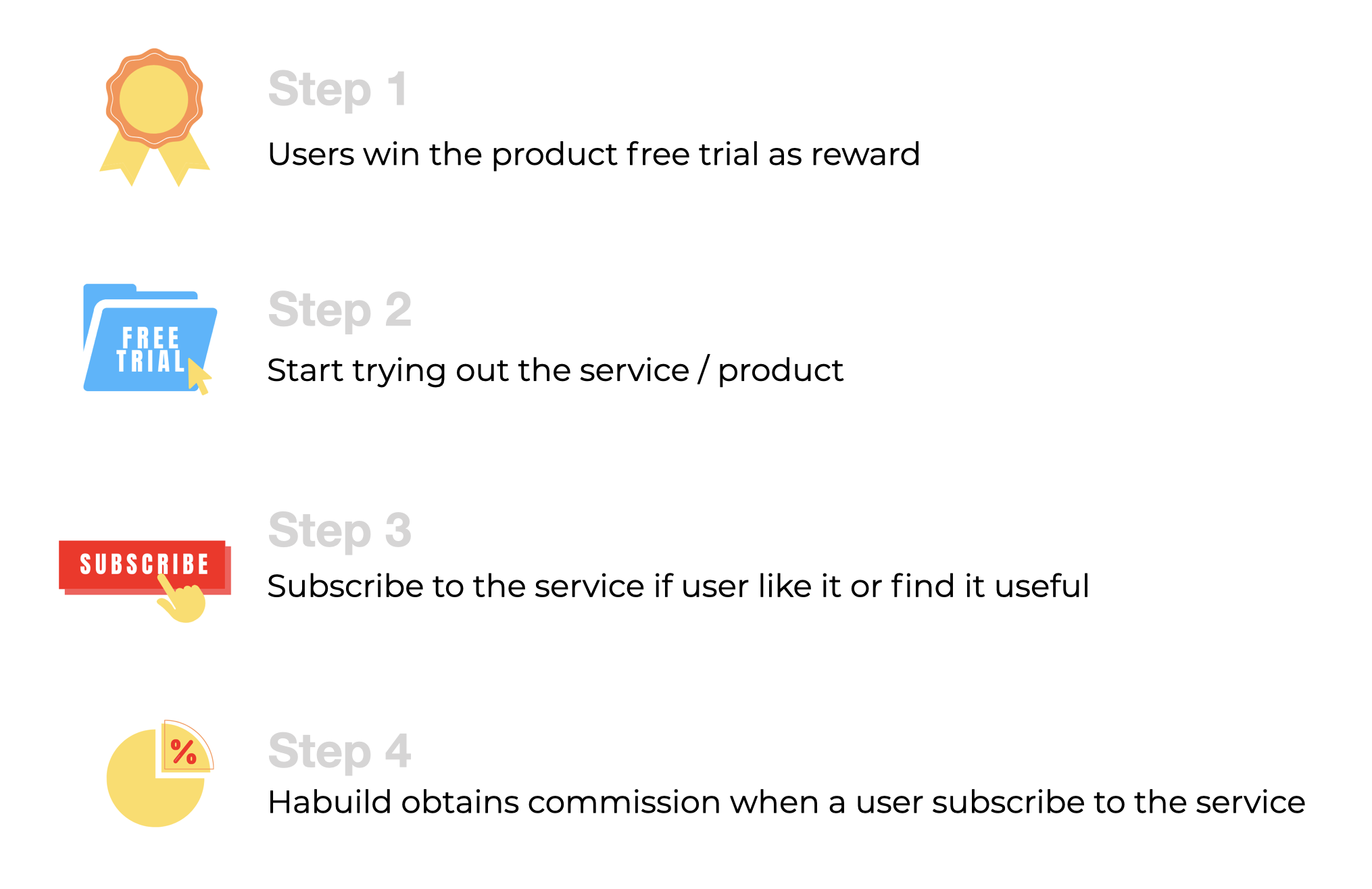Summary
Problem statement: To help users to build up a habit with stronger incentives
Thinking process: Mind mapping, affinity diagram
Design process: Paper prototype, style tile, and wireframe
Business opportunity
Reflections
4 weeks student project
Problem Statement
Have you ever wanted to build a new habit but always struggled to stick with it?
Building a new habit is easier said than done. Most of the time we know certain habits are good for us, but we often lack the persistence and motivation to keep it up. There are various reasons, such as the results may not be seen in a short period of time, the process of forming a habit is tedious and hard to stay motivated.
How might we make the process of forming a habit more interesting and engaging so we can last longer?
Thinking Process
Brainstorming the keyword: Productivity
The topic of the project is productivity. To begin, I worked on mind-mapping and wrote down the things I think are related to productivity. The ultimate reason people want to be productive is to be better, either physically, mentally or just be more efficient. These thoughts led me to the idea of the habit building app.
Tool: Miro
Questions I was thinking about
Why is it hard to form a good habit even though we know it will benefit us?
Takes a relatively long time to see changes
Requires more effort
Less comfortable
Results are not guaranteed
Why bad habits easily exist in our daily life?
Laziness
Instant satisfaction
Easy to do
Comfortable
Peer pressure
What makes a good habit last?
Mindset
Seeing the progress
Measurable results
Social recognition
Sense of rewarding
Thinking from the other side
What elements make a less favourable productivity app that keeps people from using it?
Not syncing between devices
Complicated to use
Advertisement distraction
Privacy concerns
Tedious to setup
Tool: Miro
Keywords: engaging, achievable, rewarding
After going through the above questions. I started to think about how to keep people motivated and how to let people be more responsible for the commitments they make. I then decided that the main features should include ability to engage within a peer group, divide goals into smaller steps, at the same time, providing rewards.
Proposed Solution
Habuild is designed to help users to go through a 21-day habit building processes. It places emphasis on fun, engagement and reward to help fight against our human nature of laziness and lack of determination.
Habuild gamifies the habit building process to increase the interaction between friends and families, in this case, users grow a sense of commitment. In addition, peer support makes the users feel that they are not doing it alone. Habuild also breaks down the habit forming process into smaller steps, in order to make goals more achievable. Unlocking in-app rewards encourages users to celebrate each step of their achievements to keep them motivated.
Sketch the Ideas
Usability Test:
First attempt - user flow NOT smooth
In the beginning, I had three categories:
1. On-going activities
2. Activities about to start
3. Create a new challenge.
I found that it required users to click a few more times to reach the functions they would like to use.
To fix that I made some modifications and drew the first paper prototype to do user testing.
Modifications I made:
Make daily check-in button more noticeable
Add a section for users to check “Up-coming activity” status
Mention this app is a 21-day program in the beginning (in-app description)
Show the total prize amount for group challenge activity
Use avatars instead of name in the ranking section
2nd Set of Paper Prototype
Fixing bugs and improving user flow based on given feedback
With the second prototype, I changed the page layout and made the user flow more intuitive based on the feedback given from the users whom were asked to perform specific tasks.
Wireframe
Tool: Whimsical
Visual Design Explorations
Visual Elements
Why these choices were made
Montserrat was chosen because of its modern, clean and bold look
Lato was used as body text because of its readability and simplicity
UI Design
Business Opportunity
Digital services are Habuild's ideal advertisement sponsors and business partners.
WHY digital services are ideal sponsors?
Low marginal cost for an extra user
The marginal cost for a digital product company to provide its service to an additional user is relatively low, therefore, the companies tend to provide a free trial to attract new users.
Similar target groups
Sharing similar target groups of people who care about their well-being and want to improve themselves
HOW it works?
Digital product companies provide their free trials as rewards.
Once the Habuild users redeem their rewards, they start the free trials of the digital products.
There is a higher possibility for the users to subscribe to the service after they try it.
Habuild gets a percentage or one-time fee for users who subscribe to the service after free trials.
Reflections
I am always interested in productivity and self-improvement topics and I was excited to build this app. Here are the things I learnt along the process:
How does Habuild differentiate from similar apps?
I had download similar apps and found that most of these apps focus on a single user. Therefore, I would like to add a function that allows users to engage with their friends and family.
What did I miss in this case study
Due to the time constraint of the class, I was only able to interview a couple of people about their behaviours, pain points, and incentive. This is the part I should have observed more.
What design methods can I use next time to make it better?
Qualitative research
Questionnaires and surveys
Besides, I thought about how to increase the business value of the app, this led me to think about the potential business partners and advertisement sponsors. Through this project, I learnt to consider different aspects of the product, from user experience to business value. Goals are varied dependent on aspects, how to integrate these elements into a single app is a challenging and interesting process.






















